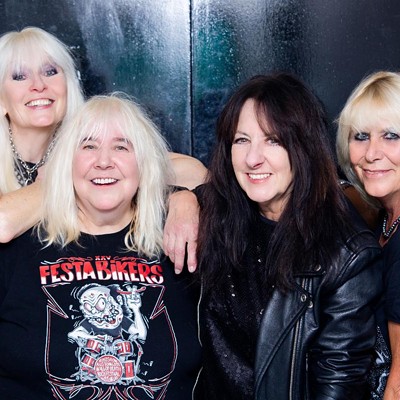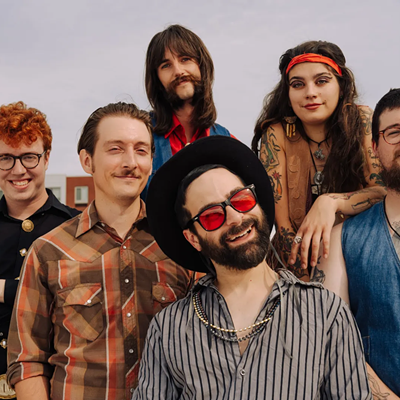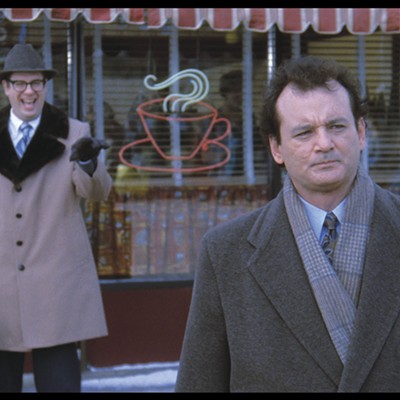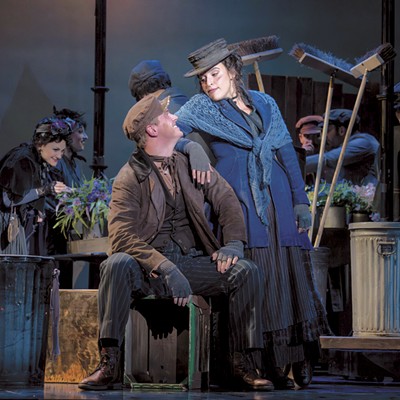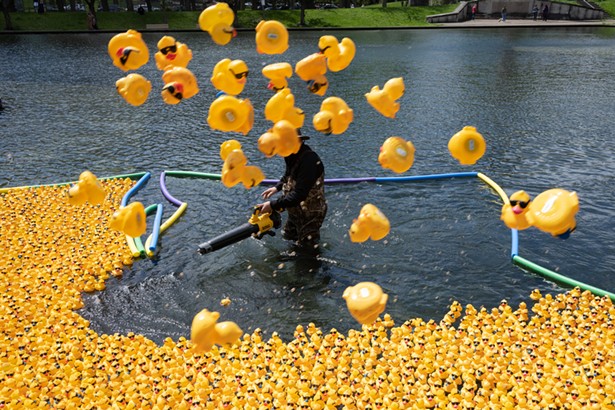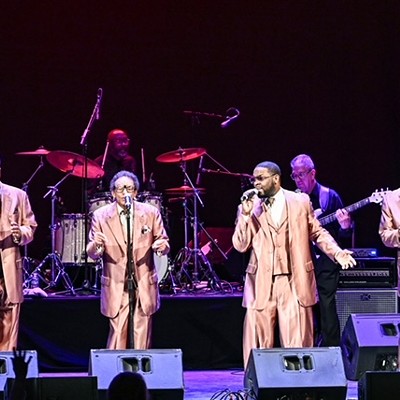
The film's principal subject, Sandy White Hawk, was taken from her Native American mother on the Rosebud Reservation in South Dakota as a child and sent to live with a white family, who ended up being abusive. She didn't return to her homeland until she was 35. Her story is one of many fraught adoption cases, both before and after ICWA, a law passed in 1978 to address the high rates of forced adoption and removal of Native American kids into white homes or boarding schools (during the era's peak, nearly a third of Native children were forcibly removed). The adoptions were often done by coercion or without consent from the birth parents, and is part of a long history of the American government operating with the mission of "kill the Indian, save the man."
Blood Memory covers all of this, as well as the continued struggle to protect and enforce ICWA, as in the Adoptive Couple v. Baby Girl Supreme Court Case of 2013. It's a Native issue, but it's also a white issue, as descendants of both groups will grapple with these issues indefinitely.
Pittsburgh City Paper chatted with director Nicholas about the research involved, approaching the topic as a white director, and de-colonizing history. This interview has been edited for length and clarity.
BLOOD MEMORY Documentary - OFFICIAL TRAILER from Cinex Studios on Vimeo.
How did you dive into the research?
The big thing is [that] all history is told from the colonizer's point of view, so seeking out history from the indigenous point of view was sort of the mission. That is something that I think is a universal concept that we need to start thinking about.
Then in 2013, the Baby Veronica case happened. That case, that's what catapulted everything for the project. This stuff is really still happening, it's not just people saying it's happening. There's clear, obvious evidence that this is still a major issue 40 years later. There's so many different layers now that this film can go in, and it's not just one person's story of reunification.
I really wasn't interested in telling a story that was all past. In that year, so much of the current context solidified. And then we had to start learning Indian law, on top of Indian history. That's the hardest thing to convey in the film. How do you explain to people that Native identity is a citizenship identity? It's like being a member of Canada or the U.S. You can be a dual member. But for some reason when we talk about it in the Native context, our society goes, "Well what do you mean? How can you be a citizen of a Native tribe?" We just have this history of dismissing that sovereignty.
How did you approach this subject as a non-Native person? Especially since the movie is about the opposite of trusting white people. Did you have any difficulty gaining trust?
Of course. That's why it took the better part of a decade to make. Sandy [White Hawk] was skeptical at first, but because of her reunification process and because of growing up in a white society, she also encountered skepticism and racism when she came home. So she — and a lot of adoptees — experience sort of being stuck between two worlds. They're not white enough for the white world and they're not Native enough for the Native world.
Certainly there was a lot of "you shouldn't be doing this, you're a white dude" from the community. But there is a bit of a misconception that this film is a Native story alone. It is a Native story, because that's who it's impacted the most, but it's impacted our white society in a lot of the similar ways. I think some of the themes about erasure and cultural identity are applicable outside the indigenous community, you know the way we as Americans sort of relinquish our cultural identity and become part of this colonial, capitalist, American ideal. I think that's haunting our society for sure.
There's a call out right now from this group called the National Native American Boarding School Healing Coalition, so they've put out a call for churches to research in their archives and acknowledge the history of their involvement in the boarding schools, because most of them were organized by churches early on. And the only church that's responded to the call is the Quakers. I think that's just a really important process of white people doing their own research and contributing to the conversation and owning the history and not putting the onus on the indigenous community to teach them everything.
What was the response like when you showed the film to Native audiences?
We did a lot of developmental screenings, which were both good and bad. The film wasn't totally realized and it's hard for an audience to see through what's there like the filmmaker can. We actually got a lot of skepticism thrown at us and then because of that a lot of people distanced themselves from us, which made fundraising and community development a little difficult. But we kept plugging away, and we obviously took that feedback and it guided us a lot.
From 2015 to the end of the process we were really networking with people who work in this field, from all aspects: social work, legal, family services. We were just really asking 'what kind of training tools do you need?' Just figuring out what would make the best context for this film to be used as an educational tool, but not make it like a boring educational film.
You have a couple of Native crew members working on the film. Was that intentional?
Elizabeth [Day, a producer] was somebody who I’d reached out to two years prior [to getting funding] because we were trying to get an Indigenous perspective in the immediate creative process. Once we started talking to her, it's like all of her family works in this. Literally, everyone in her family does something around Indigenous child welfare. So it was like, "OK, you're a filmmaker who really understands this issue and you're in the city we're most based out of when we're filming."
The other thing with that too, there's a big thing in the documentary world, and I think it's a great movement, that stories need to be told from people within the community. And I'm all for that. I do think this film flirts a line, because like I said before, it's about this cross-cultural conflict. If this film was all about one Native family dealing with the Indian Child Welfare Act and trying to get their kids back, that's a very different story. That's an Indigenous experience story alone and that's a story that should be told by an Indigenous filmmaker. There were things we were able to bring to it, being non-Natives, interviews we were able to get because we were non-Natives. I don't know if we would've gotten the skeptical, borderline racist stuff that we did get in the film if they were speaking to Indigenous people off-camera.


